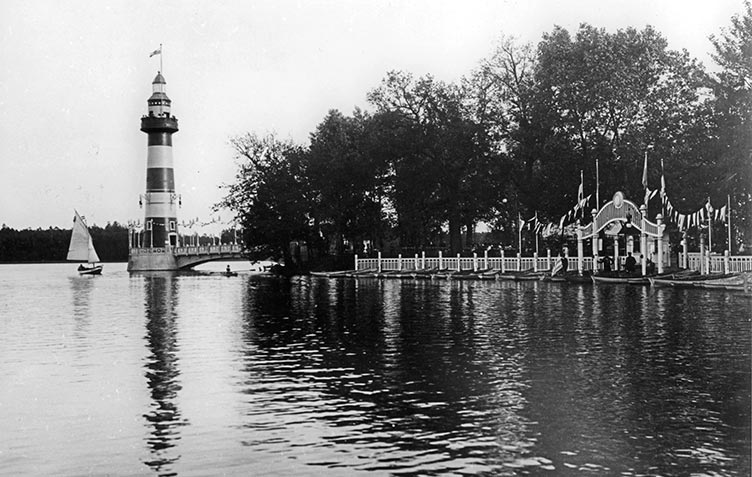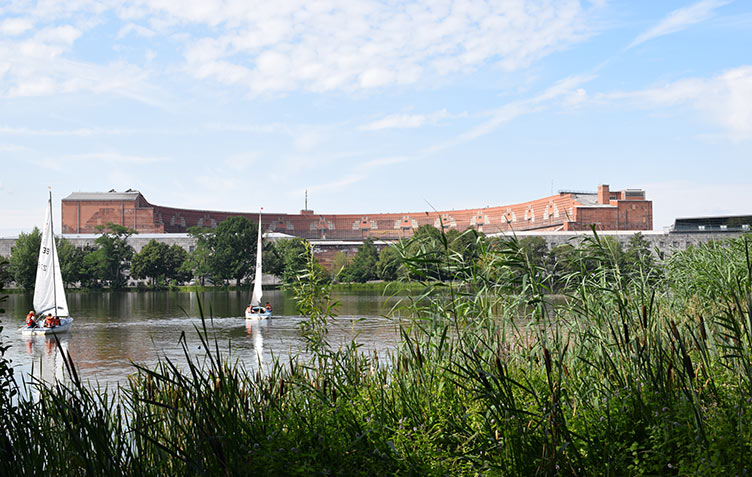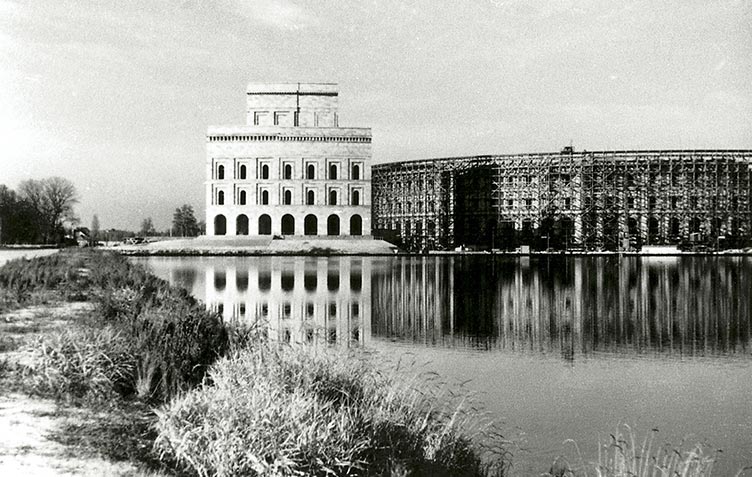5. Great Dutzendteich Lake

The lake known as the Dutzendteich was created in the 14th century as a water storage reservoir. The name most probably comes from "Dutze", a medieval word for reed. The Dutzendteich area has been a favorite destination for outings since the 19th century. A lighthouse was built on the far shore as a further attraction to grace the 1906 Bavaria State Exhibition. Visitors could take an elevator up to a viewing platform.

After 1945, the City of Nuremberg restored the site to its original recreational use and reestablished the Dutzendteich park. The area included the Luitpold Grove, the grounds of the former zoo, and the site of the planned German Stadium. Today, the park is used for a wide variety of sports and leisure activities.
.

Although it was never completed, the Congress Hall gives a sense of the dimensions of Nazi Party Rally architecture. Popular leisure facilities like a public swimming pool and the 1906 lighthouse were demolished to make room. Part of the Dutzendteich lake was drained. The foundations for the monumental structure were extremely complex and costly.